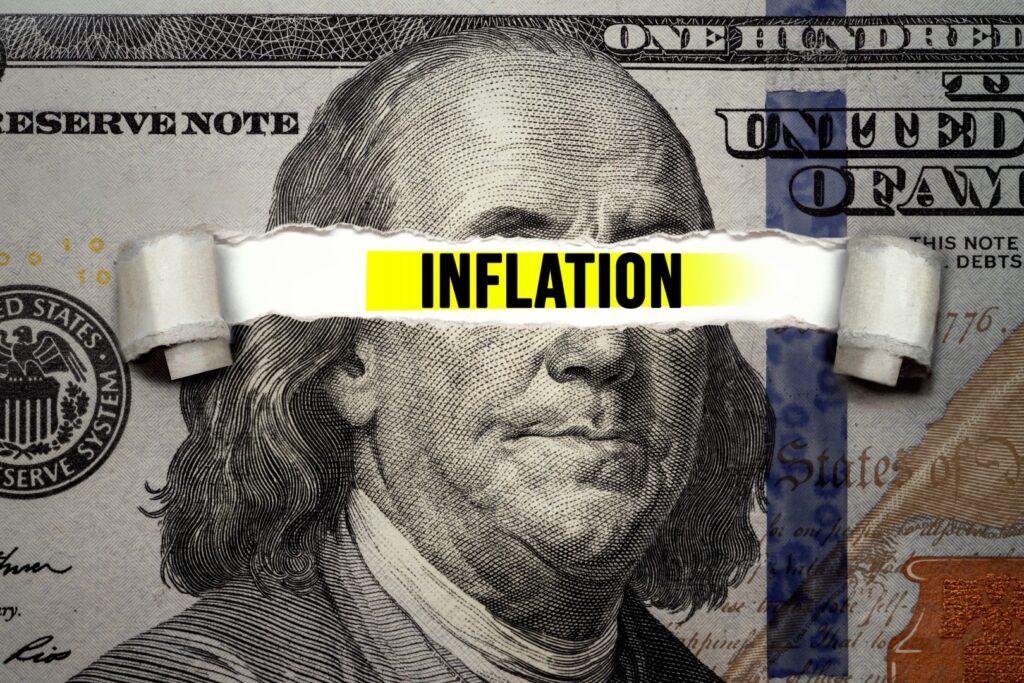Inflation can have a significant impact on your investment portfolio. It refers to the general increase in the prices of goods and services over time, which results in the loss of purchasing power of a currency. This means that over time, the same amount of money can buy fewer goods and services than it could in the past. In this blog, we will discuss the impact of inflation on your investment portfolio and how to protect it.
The Impact of Inflation on Your Investment Portfolio
Inflation can have a detrimental effect on your investment portfolio. If the rate of inflation is higher than the return on your investments, then you are effectively losing money in real terms. For example, if inflation is 3% and your investments are only earning a return of 2%, then your purchasing power is decreasing by 1%.

Inflation affects different asset classes in different ways. For example, bonds are particularly vulnerable to inflation, as their fixed-income payments become less valuable over time. Similarly, cash holdings lose value in an inflationary environment, as the interest earned is unlikely to keep pace with inflation.
Equities, on the other hand, have historically been considered a good hedge against inflation, as companies can increase prices to keep up with rising costs. However, not all stocks perform well during inflationary periods, so it’s important to choose stocks carefully.
How to Protect Your Investment Portfolio from Inflation
There are several strategies you can use to protect your investment portfolio from the impact of inflation:
a. Invest in Inflation-Protected Securities
Inflation-protected securities, such as Treasury Inflation-Protected Securities (TIPS), are designed to protect investors from the negative effects of inflation. These securities offer a fixed rate of return, with the principal adjusted for inflation. This means that if inflation rises, the value of the security will increase accordingly.
b. Invest in Real Assets
Real assets, such as real estate and commodities, are often considered good hedges against inflation, as their prices tend to rise in an inflationary environment. However, not all real assets perform well during inflationary periods, so it’s important to choose assets carefully.
c. Invest in Equities
As mentioned earlier, equities can be a good hedge against inflation, as companies can increase prices to keep up with rising costs. However, not all stocks perform well during inflationary periods, so it’s important to choose stocks carefully.
d. Invest in Global Markets
Investing in global markets can help diversify your portfolio and reduce the impact of inflation. Different countries have different inflation rates, so investing in a range of markets can help spread your risk.

e. Review and Adjust Your Portfolio Regularly
It’s important to review and adjust your investment portfolio regularly to ensure that it remains aligned with your investment goals and risk tolerance. In an inflationary environment, it may be necessary to adjust your portfolio to include more inflation-protected securities or real assets.
Inflation can have a significant impact on your investment portfolio, but there are strategies you can use to protect your investments. By investing in inflation-protected securities, real assets, equities, and global markets and regularly reviewing and adjusting your portfolio, you can mitigate the negative effects of inflation and achieve your investment goals over the long term.
The Role of Diversification in Protecting Your Investment Portfolio from Inflation
Diversification is another important strategy for protecting your investment portfolio from the impact of inflation. Diversification means spreading your investments across different asset classes, sectors, and geographies. This can help reduce the risk of losses in any one particular area and protect your portfolio from the negative effects of inflation.
When diversifying your portfolio, it’s important to consider the impact of inflation on each asset class. For example, stocks and commodities have historically performed well during periods of inflation, while bonds and cash have not. By including a mix of inflation-resistant assets in your portfolio, you can reduce the impact of inflation on your overall investment returns.
The Importance of Monitoring Inflation and Adjusting Your Investment Strategy
Finally, it’s important to monitor inflation and adjust your investment strategy accordingly. Inflation rates can fluctuate over time, so it’s important to keep a close eye on inflation trends and adjust your portfolio accordingly.
For example, if inflation rates are expected to rise, you may want to increase your exposure to inflation-resistant assets, such as TIPS or commodities. Similarly, if inflation rates are expected to fall, you may want to reduce your exposure to inflation-resistant assets and increase your exposure to other asset classes.

It’s also important to consider the impact of monetary policy on inflation. Central banks can influence inflation rates by adjusting interest rates and monetary policy. By staying up to date on changes in monetary policy, you can better anticipate changes in inflation rates and adjust your investment strategy accordingly.
Inflation can have a significant impact on your investment portfolio, but there are strategies you can use to protect your investments. By investing in inflation-resistant assets, diversifying your portfolio, monitoring inflation trends, and adjusting your investment strategy accordingly, you can reduce the impact of inflation on your portfolio and achieve your investment goals over the long term.
In summary, inflation is an important consideration for investors, and it’s essential to understand how it can impact your investments. By being aware of the risks and implementing strategies to protect your portfolio, you can ensure that your investments maintain their value over time and help you achieve your long-term financial goals.

